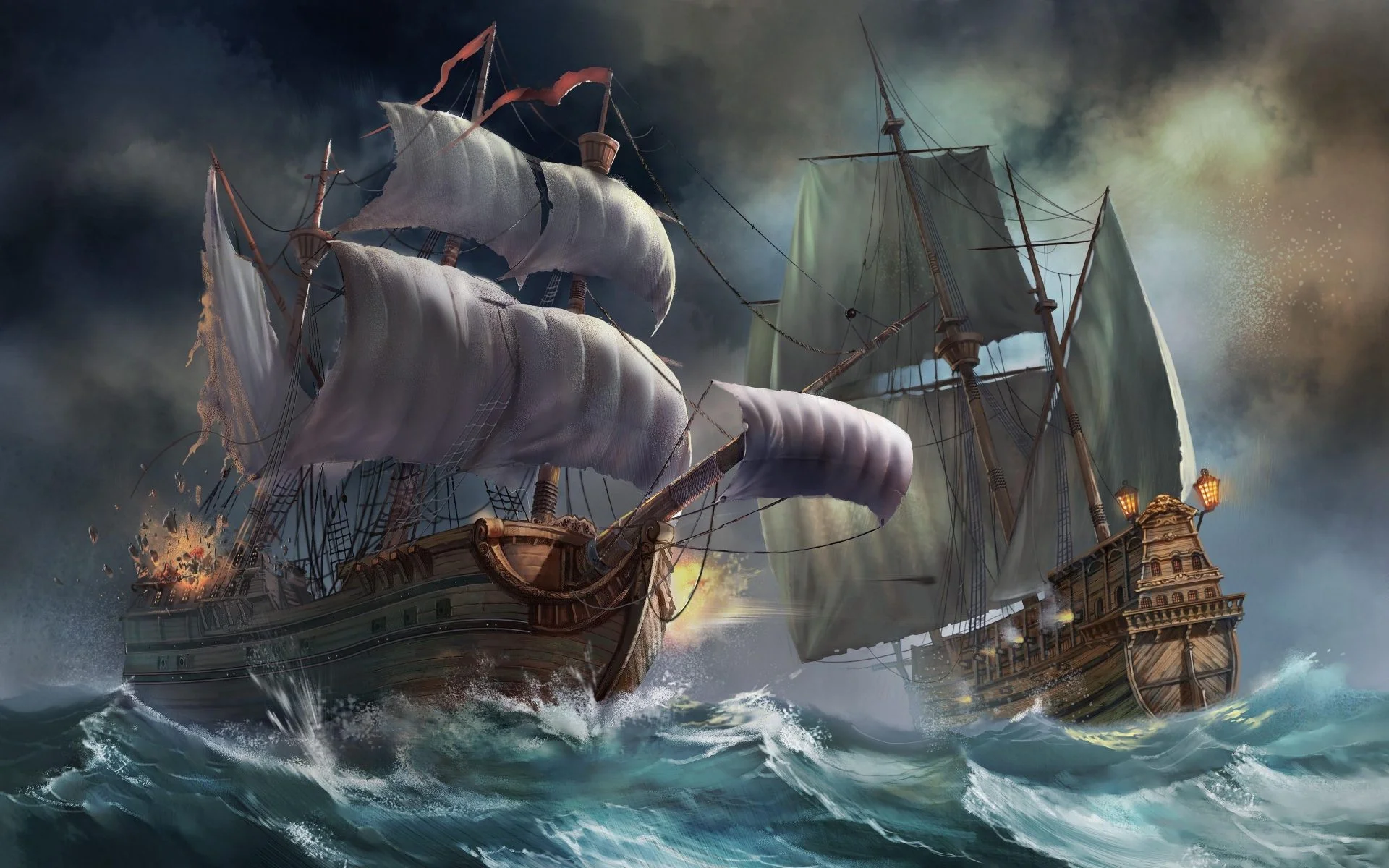Despite the common stereotype depicting pirates as swashbuckling marauders and bloodthirsty predators of the high seas, pirates applied a construed form of democratic constitutional rule to minimise conflict and create piratical law and order amongst a ship’s crew.
The Pirate Code was an article of agreement that varied from captain to captain, but were variously called the Chasse-Partie, Charter Party, Custom of the Coast, or the Jamaica Discipline.
Each sailor was expected to sign or make his mark on the articles, inducting them into the ship’s crew and entitling them to vote, bear arms, be due compensation for injury and share in the ships plunder.
Nine piratical articles have survived, chiefly from text written by Charles Johnson in his biographies of contemporary pirates “A General History of the Pyrates” from 1724. Johnson’s book gives an almost mythical status to piracy, which many historians suggest has led to the modern conception of pirates in popular culture.
The first surviving Pirates Code was written by the Irish captain George Cusack, who operated in northern Europe and the West Indies in the late 17th century. According to the book “The Grand Pirate, Or the Life and Death of Captain George Cusack”, Cusack’s code stated:
“…declaring their resolution of running away with the Ships and Cargo, and of taking or sinking all Ships or Vessels they should meet with belonging to any Nation, English only excepted: promising to all persons aboard that joyned with them, their proportion and shares of the Ship and Cargo; together with all other Ships they should afterwards take or surprize, according to the Lawes of Pleron: to which end he ordered to be drawn up in Writing an Obligation to himself as Captain, and the said Parslow as Lieutenant, expressing the Resolutions of the Subscribers upon their Oaths to live and die with them in this their present design…”
One of the most famous articles was written by Welshman John Bartholomew Roberts, considered the most successful pirate of the Golden Age of Piracy (measured by vessels captured). Most of what we know about Roberts comes from Johnson’s works, who describes Roberts as “The Great Pyrate” and eventually “Black Bart”.
Robert’s articles gave a more detailed breakdown as to the provision and allocation of resources, issuing severe punishment for offenders and an allowance for injuries sustained in service. Some of Robert’s articles included:
“Every man to be called fairly in turn, by list, on board of prizes because, (over and above their proper share) they were on these occasions allowed a shift of clothes: but if they defrauded the company to the value of a dollar in plate, jewels, or money, marooning was their punishment. If the robbery was only betwixt one another, they contented themselves with slitting the ears and nose of him that was guilty, and set him on shore, not in an uninhabited place, but somewhere, where he was sure to encounter hardships.”
“No man to talk of breaking up their way of living, till each had shared one thousand pounds. If in order to this, any man should lose a limb, or become a cripple in their service, he was to have eight hundred dollars, out of the public stock, and for lesser hurts, proportionately.
“No striking one another on board, but every man’s quarrels to be ended on shore, at sword and pistol.”
During the late 17th century, the Golden Age of Piracy was in decline, brought on by the new Acts of Parliament that forbade ships sailing under foreign flags. The crackdown on piracy after the War of the Spanish Succession and the War of the Austrian Succession (1740-48) and the War of Jenkins’ Ear (1739–48) offering pardons to pirates led to the practice being virtually abandoned.
The historian, Marcus Rediker, argues that the golden age of piracy ended in 1726 when the pirate William Fly was executed, because his was the last real public spectacle execution of a pirate.
Header Image Credit : ialehsn – Shutterstock





